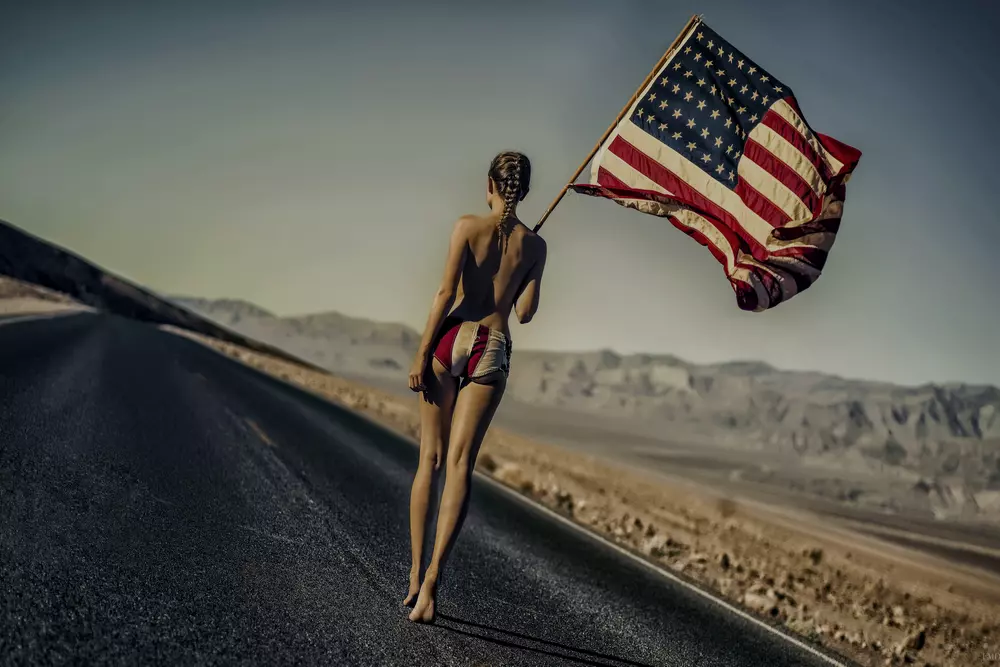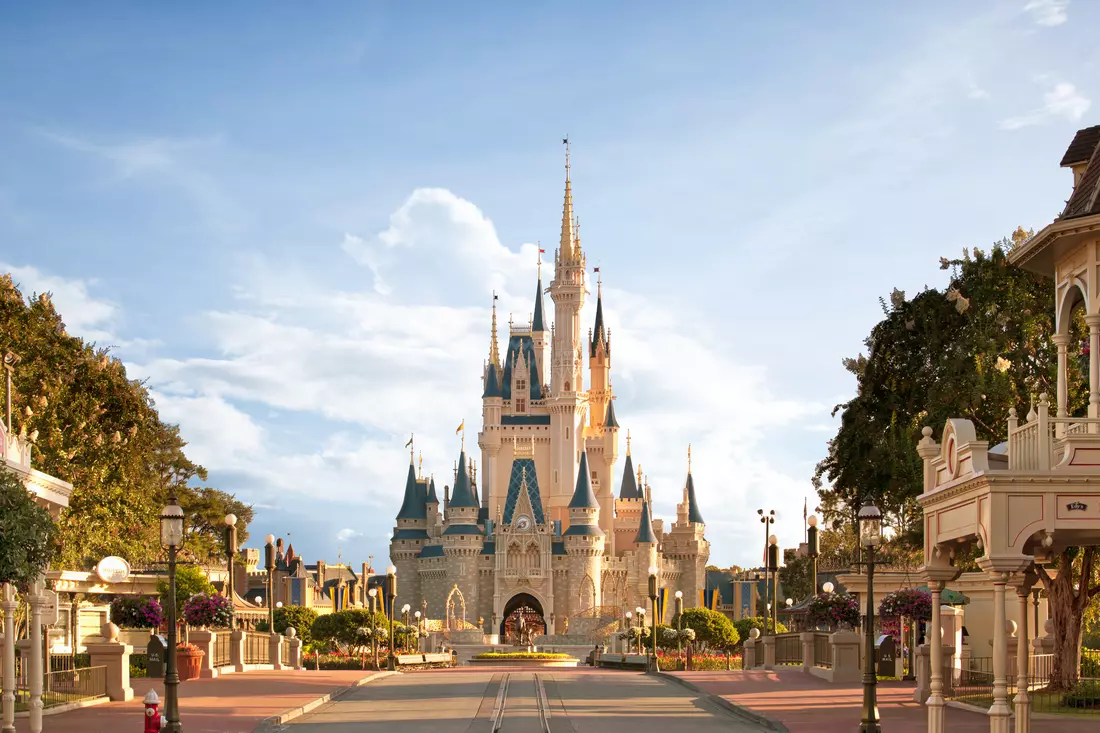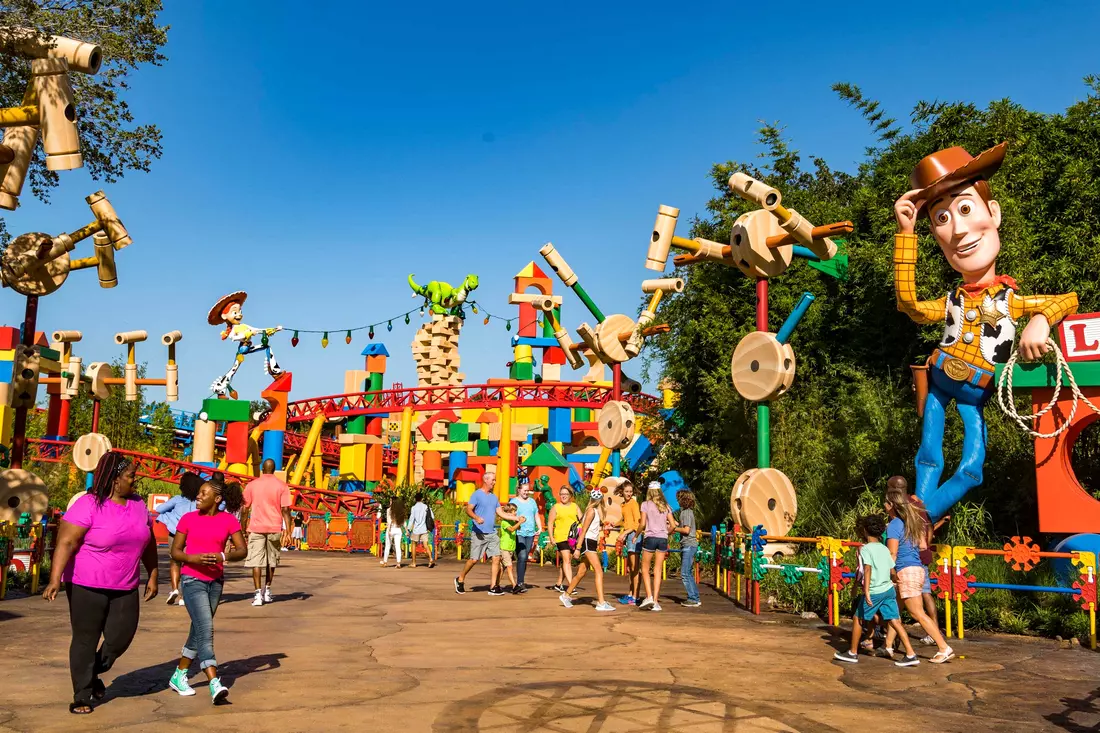Railroads in the U.S. are not just a means of transport; they are a symbol of the country, its character, and even its destiny. The nation was built on the rails, and the American Dream was born on the rails. Europe has long seen trains as a convenient way to travel from city to city, Russia as the main artery of its territory. For America, however, the railroad became a legend, an epic, a song about conquering space.
Imagine the 19th century: endless plains, wild prairies, gold prospectors, and cowboys. Everything seemed chaotic and fragmented until the steam locomotive arrived — puffing and thundering westward. The sound of wheels and the smoke from the stack became a symbol of progress. Every new mile of track opened up entire worlds — small towns, farms, and new lands for settlers.
You can talk all you want about automobiles and aviation, but it was the railroads that made the U.S. a unified country. They connected the Atlantic and the Pacific, turned the Wild West into part of a civilized nation, and gave America a new myth — a myth of speed, industrial power, and humanity’s triumph over nature.
Railroads in the U.S. represent both romance and business, stories about people who built bridges over canyons and tunneled through mountains, about those who drove trains through snow and deserts. They moved millions of tons of coal, oil, and grain — without which the U.S. economy could never have become the world’s largest. At the same time, they offer scenic Amtrak routes, where today tourists explore America through the eyes of pioneers, gazing at the Colorado cliffs or the Pacific coastline from the window of a panoramic carriage.
The railroad in America is an eternal paradox. A country that first built the Transcontinental Line is now known not for high-speed trains, but for freight trains stretching two kilometers long. Yet this is the essence of the U.S.: here, the rails are less about comfort and more about scale, power, and historical memory.

The longest railway network in the world belongs to the United States. It stretches over 250,000 kilometers — enough to circle the Earth at the equator more than six times!
How It All Began: The Golden Spike That United America
The history of railroads in the U.S. did not begin with a grand triumph, but with cautious steps. In 1827, the first section of the Baltimore & Ohio Railroad was laid in Baltimore. At the time, it seemed like a bold, almost crazy venture: why spend millions when rivers, canals, and stagecoaches were available? Yet the steam locomotives proved stronger than the skepticism. Within ten years, no one doubted it: the rails were shaping the nation’s future.
- 01. The First Miles: From Experiment to System
The first American railroads looked more like an amusement ride: short lines, slow steam engines, wooden sleepers. But year by year, distances grew, locomotives became more powerful, and entrepreneurs more ambitious. Railroads proved they could connect cities faster and more reliably than waterways or stagecoaches.
It was then that the idea emerged in society: to connect the East and West with a single network, allowing settlers, gold prospectors, and traders to travel across the country. - 02. 1869: The Golden Spike in the Utah Desert
On May 8, 1869, an event occurred in U.S. history that is still considered a symbolic moment for the nation. On a desolate plateau in Utah, two railroad lines met — one from the Union Pacific building from the east, and one from the Central Pacific coming from the west.
When workers drove in the last spike made of pure gold, thousands of miles of track became the single Transcontinental Railroad. For the first time, East and West were connected by a straight line.
Newspapers at the time wrote: “America is no longer vast — it has become united.” And it was true. What once took months of dangerous travel by stagecoach could now be covered in a week by train. People felt, for the first time, that they lived in one country rather than in disconnected regions. - 03. A Symbol of Progress and a New Era
The “Golden Spike” became more than just a piece of metal. It symbolized the U.S.’s transition into a new era — an era of speed, industry, and expansion. Telegraph lines followed the rails, towns sprang up like mushrooms after rain, and settlers moved west by the thousands.
This day is compared to the moon landing. If space travel gave Americans faith in a technological future, the Golden Spike of 1869 gave confidence that they could conquer distance and unite the oceans.

The Age of Giants: Railroad Barons and Their Empires
When America got on the rails, a new era began — the era of railroad magnates, later dubbed the "robber barons". Their lives and empires resemble true novels of power, money, and audacity.
- 01. Who Were They?
- Cornelius Vanderbilt
The man who started with steamboats and turned New York into the hub of the nation’s railroad map. Nicknamed the "Commodore", he knew how to turn transport projects into gold. - James Hill
Known as the "Empire Builder of the North", he created the Great Northern Railway. Unlike his competitors, he received no government subsidies, building the railroad with his own capital and smart strategy. - Leland Stanford
An entrepreneur, politician, and one of the founders of Central Pacific. He took part in the ceremony of driving the Golden Spike in Utah.
Their railroads were more than just tracks; they were arteries shaping the fate of regions. Where rails passed, towns sprang up. Where the line bypassed, oblivion followed.
- 02. Building at the Limits of Possibility
Constructing railroads in the 19th century was almost a heroic feat.
- Workers laid sleepers under the scorching sun of deserts and in the snows of the Rocky Mountains.
- Chinese and Irish immigrants tunneled through granite, risking their lives every day.
- Hundreds died during construction, yet the railroad moved forward, mile by mile.
This struggle against nature made railroad companies true legends of their time.
- 03. Railroads That Built Cities
The railroad determined whether a place would thrive or fade. If the line passed through a small settlement, it became a commercial center. If not, people left, and life stalled.
This is how cities like Denver or Seattle were born, their fate directly tied to whether they made it onto the railroad map. - 04. Power and Ambition
The magnates owned millions of acres, wielded political influence, and literally controlled the country’s development. They were accused of monopolies, corruption, and ruthless methods. Yet it was their ambition that made it possible for America to transform from a "land of settlements" into an industrial powerhouse.
One could say the "Age of Giants" was America’s version of the Industrial Revolution, only with a cowboy spirit and an unbridled appetite for risk.

The 20th Century: From Luxury to Crisis and a New Beginning
The 20th century for American railroads reads like a novel full of unexpected twists. It had its "golden pages" — luxurious trains with carpeted aisles and silver-service dining — and heavy chapters of crises, bankruptcies, and industry bailouts. Railroads evolved from symbols of progress and romance into a pragmatic system, where freight transport dominated, and passenger services survived only thanks to government support.
- 01. The Golden Age: Luxury on the Rails
At the beginning of the 20th century, American railroads were still the main arteries of the country. Trains connected cities, factories, and farms, transporting mail, coal, grain, and people. For many, a train was not just transportation but a hub of social life: deals were made in sleeping cars, romances sparked in dining cars, and passengers read newspapers and planned their futures on night expresses.
- Pullman cars were famous for comfortable sleeping berths, soft seats, and service on par with the finest hotels.
- Express trains like the 20th Century Limited or Super Chief became legends. A ticket meant prestige — it was a "first-class life on wheels."
Government regulation already strongly influenced the industry: fares and routes were often determined not by the market but by rules protecting passengers, limiting companies' flexibility. Posters promised "America from the Pullman window": from the skyscrapers of New York to the canyons and plains of the West.
Railroads of that era were more than transportation; they were cultural icons — like Hollywood or jazz.
- 02. World War I and Federal Coordination
When the U.S. entered World War I, railroads became a strategic resource: transporting troops, weapons, and supplies required coordinated effort. In 1917, the federal government temporarily took control of the railroads under the United States Railroad Administration (USRA). For 2–3 years, railroads operated under a unified management — an unprecedented experience of centralized planning for the industry.
USRA introduced standardized locomotives, unified rolling stock, and attempted to optimize car allocation. After the war, control returned to private companies, but the national coordination demonstrated the importance of railroads for the state. - 03. Interwar Period: Modernization and Early Cracks
The 1920s–1930s were a mix of optimism and anxiety. On one hand, the first streamliners appeared — sleek diesel-electric trains with modern designs, promising a new era of speed and comfort. Art-deco cars, illuminated signs, and posters made train travel an event.
On the other hand, automobile mobility, suburbanization, and aviation began reshaping the landscape. The Great Depression of 1929 severely reduced revenues: fewer passengers and freight, shrinking fares, while operational costs — track, bridges, and staff — remained high. Companies sought savings, cutting service and abandoning unprofitable lines. - 04. World War II: Back in the Spotlight
During World War II, railroads returned as a national service. U.S. rails transported troops to port hubs, supplied factories, and carried tons of raw materials. Traffic reached record levels: cars were full, schedules tight, and maintenance ran around the clock.
The war showed that despite competition from cars and planes, railroads remained essential for mass transport of materials. However, the aging rolling stock and infrastructure, accumulated during the Depression and wartime, required investment — often delayed, as private companies could not afford major upgrades on their own. - 05. Postwar: America Shifts Gears
The postwar two decades marked both hope and major shifts. By the early 1950s, railroads faced serious pressure from two factors:
- Mass motorization and highway construction
The 1956 Federal-Aid Highway Act opened a new era of mobility: trucks became convenient for short-haul freight, and private cars made train travel less attractive for many Americans. - Accessible air travel
Passenger air service became faster and eventually cheaper (per mile), hitting long interregional routes particularly hard.
Nevertheless, the industry modernized technologically: during the 1940s–50s, dieselization occurred — steam engines were replaced with more economical diesel-electric locomotives. This improved performance and reduced costs but could not stop passenger decline.
By the 1960s, most classic interregional passenger routes were unprofitable. Railroads increasingly focused on freight, where margins were higher.
- 06. Politics, Mergers, and the Penn Central Collapse
Industry regulation was a double-edged sword. On one hand, it protected the public from sharp fare increases; on the other, it restricted companies' flexibility. Firms tried to survive through mergers and asset consolidation. One of the largest and most unsuccessful attempts was:
- In 1968, New York Central and Pennsylvania Railroad merged to form Penn Central Transportation Company — one of the largest railroad companies in the country.
- Just two years later, due to managerial mistakes, debts, and declining business, Penn Central declared bankruptcy (1970). It became the largest corporate collapse of the time and a blow to the industry's reputation.
The Penn Central failure showed that without systemic reform and government support, the Northeast rail network could have collapsed entirely.
- 07. The Birth of Amtrak: Saving Passenger Services
The government, however, did not allow passenger rail to disappear entirely. In 1971, Amtrak was established — the national passenger rail operator. Its goal was simple: take over routes abandoned by private companies and maintain at least a basic train system for people. Amtrak became a compromise:
- It was never highly profitable;
- But it ensured connections between major cities;
- And it allowed passenger trains to remain part of American life.
Today, Amtrak operates dozens of routes, and trains like the Acela Express on the Northeast Corridor show that rail can still be competitive in the 21st century.
- 08. Deregulation and Industrial Revival: Staggers Rail Act 1980
A major turning point for American railroads came with the 1980 Staggers Rail Act. This law significantly relaxed regulation of fares and commercial activity, giving companies more freedom in pricing, contracting, and abandoning unprofitable lines. The results were swift and dramatic:
- Companies could restructure, focus on profitable freight, and introduce new services (unit trains, intermodal, double-stack containers).
- Railroad revenues increased, profitability rose, and the industry attracted investment.
- Many weak lines were abandoned or sold to regional operators — reducing losses and allowing focus on key corridors.
In short, after decades of stagnation and decline, freight rail regained strength and became competitive in logistics.
Why Passengers “Won the Battle but Lost the War”
The decline of passenger rail in the U.S. has many causes:
- Convenience of cars and highways.
- Speed and accessibility of air travel.
- Fragmented investment in passenger rail infrastructure (unlike Europe or Japan, where government programs focused on high-speed corridors).
- Regulation that hindered companies from adapting to new realities.
Nevertheless, passenger trains did not disappear entirely: in high-density corridors (especially the Northeast Corridor between Washington, D.C. and Boston), trains maintain a competitive edge — speed, convenience, and eco-friendliness. Since the late 20th century, tourist and cultural rail travel has also grown in popularity: retro trains, scenic routes, and slow travel attract niche audiences.
The 20th century was one of contrasts for U.S. railroads. They began it at the height of fame and wealth, went through crises, bankruptcies, and mass passenger decline. Yet thanks to government intervention, railroads survived — no longer as the "queen of transport," but as a reliable, though niche, player.

Modern Railroads: The Freight Giant and the Passenger Underdog
Today, the United States’ railroad network remains one of the largest in the world: more than 250,000 kilometers of track span the entire country. Yet this system has its peculiarities: America is a global freight powerhouse and at the same time has one of the weakest passenger rail networks among developed nations.
- 01. Freight Railroads: The Steel Backbone of the Economy
If freight trains stopped tomorrow, the U.S. economy would come to a standstill. Coal for power plants, oil for processing, grain from Midwest farms, cars from Detroit factories — it all moves on rails.
- Union Pacific Railroad
The largest carrier in the western U.S. - BNSF Railway (owned by Warren Buffett)
A strategic artery for agricultural goods and container shipments. - CSX Transportation and Norfolk Southern Railway
Giants of the East Coast, linking industrial states with ports.
American freight trains are awe-inspiring. They can reach two kilometers in length and weigh tens of thousands of tons. Imagine a train stretching across the prairie so long that, standing at a crossing, you can count hundreds of cars, yet it still seems endless.
- 02. Passenger Rail: The Weak Link
Against the backdrop of freight success, the passenger rail system looks pale. The national operator Amtrak, founded in 1971, carries around 30 million passengers per year. For comparison, France’s TGV or Japan’s Shinkansen transport hundreds of millions. Why the difference?
- The U.S. has vast distances, and airplanes are faster.
- Cars are the primary symbol of American freedom and mobility.
- The government traditionally invested in highways and aviation rather than rail.
- 03. Northeast Corridor: A Rare Exception
The only truly competitive passenger route remains the Northeast Corridor — connecting Washington, Philadelphia, New York, and Boston. Trains are popular here because:
- Roads are congested;
- Flights between cities take time due to airport procedures;
- Rail offers a balance of speed and comfort.
The Acela Express runs on this route, reaching speeds of up to 240 km/h. This is a record for the U.S., though such speeds are common elsewhere.
- 04. Trains as Attractions
Elsewhere in the country, passenger rail is more like an attraction or a “leisurely journey.”
- Trains are slow — a trip from Chicago to San Francisco can take two days.
- Tickets are often more expensive than flying.
- Yet the scenery makes the journey unforgettable: Colorado mountains, Arizona canyons, endless prairies, and the Pacific coastline.
For tourists, Amtrak becomes a kind of time machine: you travel not for speed but for romance and contemplation.
Interesting fact: over 40% of all freight in the U.S. is carried by rail, making the system not just important but strategic.
The modern U.S. rail system is a paradox:
- Freight rail — a model of efficiency, world leader;
- Passenger rail — more of a novelty than mass transit.
And there is something very American in this paradox: business pragmatism wins over everyday comfort, yet this is precisely what makes train travel in the U.S. unique and memorable.

Infrastructure and Standards: What Makes American Railroads So Unique
Railroads in the United States are an astonishing blend of global standardization and national peculiarities. At first glance, the American network doesn’t look much different from the European one: the track gauge is standard — 1435 mm, the so-called "golden mean" adopted in the 19th century and used in most countries worldwide. But a closer look reveals that the U.S. railroad system operates differently from those in Europe or Asia, and this "difference" stems primarily from its history and economic priorities.
- 01. Freight as the Backbone
Unlike Europe, where railroads traditionally developed around passenger transport, in the U.S. since the late 19th century they became the main instrument for moving goods. This made sense: vast distances, industrialization, resource extraction, and westward expansion demanded reliable and cost-effective logistics. Oil, coal, grain, cars — all of these have been transported along the steel arteries for decades.
That’s why American railroad infrastructure was primarily designed "for weight". Stronger sleepers, heavier rails, and long freight routes were built, prioritizing load capacity and reliability over speed. Even today, the U.S. remains the global leader in freight rail length, moving more goods by rail than any other country. - 02. Passengers in Second Place
This priority meant that passenger services were never the main focus. By the mid-20th century, when Europe and Japan began developing high-speed trains, the U.S. invested in cars and aviation. Highways turned America into a car nation, and low-cost airlines made air travel faster and more convenient than trains.
As a result, today Amtrak — the national passenger operator — often struggles to compete. Its trains are slower than long-distance buses or planes in most cases. For example, a trip from New York to Chicago takes around 19 hours by train, compared to just 2 by plane. - 03. The Eternal Dream of High-Speed Rail
Nevertheless, the idea of high-speed trains has persisted for decades. The most famous project is the Los Angeles – San Francisco line in California. It promised to connect the two megacities in 2.5–3 hours and become the American answer to Japan’s Shinkansen or France’s TGV. However, since construction began, the project has been plagued by scandals: delays, budget overruns, legal disputes, and local opposition, turning it into a long-term challenge.
Beyond California, high-speed rail projects are discussed in Texas (Houston – Dallas), the East Coast (Washington – Boston), and even Florida. Yet the only route where trains truly reach modern speeds is the Acela Express on the Northeast Corridor (New York – Washington – Boston), with trains reaching 240 km/h — still below European and Asian standards. - 04. American Peculiarity: Standards Without Standardization
U.S. railroads are a paradox. Formally, international standards apply (track gauge is the same, technologies are similar to European systems), yet the system follows its own logic. For business, it works perfectly: heavy trains move millions of tons of cargo across thousands of kilometers at minimal cost. For passengers, however, it’s a world of compromises, long journeys, and limited routes.
This is the core peculiarity: the U.S. chose efficiency for the economy over speed and convenience for travelers.
Do you want to experience what it’s like to ride a train across America, where cars are longer, routes are vast, and the scenery changes from prairies to megacities? Or perhaps you want to see the contrast — take a “slow” Amtrak journey and then try a highway or domestic flight? All of this is part of the American railroad reality.

Tourist Routes in the U.S.: Trains as a Window into a Land of Contrasts
For many travelers, America is associated with cars, highways, and skyscrapers. But there’s another way to see the country — slower, more thoughtful, and unusual — traveling by passenger train. Unlike high-speed European or Japanese railways, American railroads offer not speed, but experiences: the grandeur of the continent, ever-changing landscapes, and genuine railroad romance.
Amtrak trains have become a kind of window into America: through panoramic cars, passengers observe endless plains, mountain ranges, rivers, and deserts. The journey turns into a small ritual, where each car is a miniature theater of nature, and the route is a script for adventure.
- 01. California Zephyr: a Rail Legend
The California Zephyr route is considered one of the most scenic in the U.S. It connects Chicago and San Francisco, covering over 4,000 kilometers through diverse landscapes.
- The Rocky Mountains and Colorado canyons are the route’s true highlights. Passengers see steep cliffs, marble-red rocks, and winding rivers.
- Panoramic cars allow unobstructed views — even in rain or snow, it’s a spectacular experience.
- The journey takes about 51 hours, but no one rushes: each car becomes a small observation deck on the continent.
Fun fact: The California Zephyr is called the “open-air museum train” because passengers can see over 200 bridges and tunnels built in the 19th century.
- 02. Coast Starlight: the Magic of the Pacific Coast
The Coast Starlight runs between Seattle and Los Angeles and is considered one of the most spectacular coastal routes.
- The train travels along the Pacific Ocean, where ocean waves and beaches meet the Cascade Mountains.
- The scenery changes rapidly: from snow-capped peaks to sunny Southern California shores.
- The cars feature panoramic compartments and observation lounges, perfect for watching the sunset over the ocean or spotting seabirds.
For tourists, the Coast Starlight is a living photo frame of the country, with each mile offering new emotions, turning the journey into a tour of the West Coast’s best natural landscapes.
- 03. Empire Builder: the Heart of the Great Plains
For those who want to see the Great Plains, rivers, and national parks, the Empire Builder route (Chicago – Seattle) is ideal.
- The train crosses Minnesota, North Dakota, and Montana, offering endless fields, forests, and winding rivers.
- Passengers may spot wild bison, deer, and rare birds, and occasionally traces of bears and moose.
- The atmosphere evokes a 19th-century expedition: quiet, measured train movement, and a sense of open space rarely found in cities.
The Empire Builder combines nature and history. Along the way, travelers see old train stations and small towns that have preserved the spirit of “Old America.”
- 04. Southwest Chief: deserts and contrasts
The Southwest Chief connects Chicago and Los Angeles, passing through the deserts of Arizona and New Mexico.
- The landscape amazes with contrasts: green plains give way to red rocks and sand dunes.
- The journey becomes a real expedition, where each car is a window into new worlds.
- At stops in small towns, travelers can step out, feel the atmosphere of the “Wild West”, visit local shops, and experience the region’s culture.
Fun fact: Along the Southwest Chief route, the train crosses several historic 19th-century rail lines, making it a true journey through time.
The main feature of Amtrak’s tourist routes is that they are not a race against time, but journeys where scenery, comfort, and atmosphere matter.
- Passengers read, take photos, and socialize with fellow travelers.
- Children and adults alike watch the changing landscapes and wildlife.
- For many, it’s a once-in-a-lifetime opportunity to experience the vastness of the U.S., which cannot be seen from a plane or car.
This is why American trains have become a distinct form of tourism, where the journey itself — not the destination — is what matters, like a small world within a vast continent.

Railroad Museums and Vintage Trains: A Journey into America's Past
In the United States, railroads are not just transportation — they are a true cultural and historical treasure. For those who want to experience the romance of 19th-century locomotives, see how the industry developed, and feel the spirit of “Old America”, there are dozens of specialized museums and heritage routes. Here, every train, every car, and even the rails themselves tell a story.
- 01. National Railroad Museum, Wisconsin
One of the oldest railroad museums in the U.S. is the National Railroad Museum in Green Bay, Wisconsin.
- Founded in 1956, the museum collects locomotives and cars from across the country.
- The exhibits include authentic 19th-century steam locomotives, vintage passenger, and freight cars.
- Visitors can walk through the collection, peek into the engineer’s cab, and see how railroads operated decades ago.
Fun fact: The museum regularly runs demonstration rides on heritage steam engines, where visitors can not only watch the locomotive in motion but also feel the vibration of the wheels, smell the smoke, and hear the hiss of steam — a real step back into the 19th century.
- 02. California State Railroad Museum, Sacramento
On the West Coast, the California State Railroad Museum in Sacramento is one of the largest railroad museums in the country.
- The exhibition tells the story of railroads in the development of California and the Wild West.
- Visitors can see cars and locomotives from different eras, including the famous Central Pacific steam engines that built the Transcontinental Railroad.
- Some cars feature interactive exhibits, allowing visitors to “operate” a locomotive via simulators and learn how engineers navigated mountains and deserts.
The museum regularly hosts heritage train rides on historic lines, letting tourists experience the Wild West and see California through the eyes of a 19th-century railroad traveler.
- 03. Steamtown National Historic Site, Pennsylvania
Steamtown is a national historic park and museum in Scranton, Pennsylvania, dedicated to the steam locomotive era.
- The focus is on the work and lives of railroaders, as well as locomotives and cars that actually transported people and freight.
- Visitors can climb into the cab of an operating steam engine, feel the power of steam, and see how historic machines handled difficult routes.
- The park offers themed tours, workshops, and heritage train rides, making the museum interactive and lively.
Fun fact: Some of Steamtown’s heritage trains run on original 19th-century rails, laid for coal freight, adding authenticity and a true historical atmosphere.
- 04. Heritage trains as a tourist experience
For history enthusiasts, riding a heritage train is more than just a tour.
- You travel on a vintage steam locomotive, hear the whistle, feel the vibration of the wheels, and smell the fuel.
- Scenic landscapes unfold along the way, just as they did for travelers in the past.
- Visitors can join guided tours, learn about the lives of engineers and railroad workers, and immerse themselves in the atmosphere of an era when railroads connected cities, states, and continents.
These routes turn the journey into a historical adventure, where modern travelers literally step into the past, and the trains themselves become living monuments of the U.S. industrial history.

Hoppers and Railroad Romance: The Culture of Traveling on Freight Trains in the U.S.
When it comes to train travel in the U.S., most people think of Amtrak passenger cars, heritage trains, or scenic tourist routes. But there is a completely different layer of railroad culture — traveling on freight trains. For some, it is a form of rebellion and adventure; for others, it is a true philosophy of freedom and open horizons. In America, this phenomenon has its own name: “freighthopping.”
- 01. Origins and Philosophy
Traveling on freight trains has deep historical roots. As early as the 19th century, when railroads connected the East Coast with the Wild West, workers and adventurers would hop onto freight cars to reach new towns and mining areas.
- During the Great Depression of the 1930s, tens of thousands of Americans “rode the rails,” traveling on freight trains in search of work and food.
- These trips became a symbol of American freedom and independence during economic and social crises.
Today, freighthopping is not a survival strategy, but a distinct subculture with its own rules, rituals, and code of conduct.
- 02. Who the Hoppers Are
Hoppers are people of all ages and professions, united by a passion for traveling across the continent on freight trains.
- They know how to safely board a train car, choose a place to sleep, and plan their route.
- Travelers often keep journals, photograph trains and landscapes, and share their experiences in online communities.
- Many see the journey as a ritual or a test of strength and character, as every mile on the rails is a small victory over fear and the unknown.
- 03. Modern Freighthopping Culture
Today, traveling on freight trains maintains the spirit of adventure while acquiring aesthetic value:
- Travelers take photos of the scenic landscapes visible from the cars.
- Social media and blogs turn these trips into art projects, showing America through the eyes of a rail wanderer.
- There are clubs and communities where members exchange route maps, safety tips, and stories of encounters with train engineers.
- 04. Rules and Safety
Although freighthopping may seem like a romantic adventure, it requires caution:
- Access to freight cars is officially prohibited without permission, and breaking the law can result in fines or arrest.
- Experienced hoppers strictly follow safety rules: never run across platforms, avoid moving trains, and use only safe areas for boarding and resting.
- Many treat these journeys as a rite of passage or a way to test their limits.
- 05. Travel as Philosophy
For hoppers, the train is not just a means of transportation but a way to understand the country and themselves:
- They see America through the steel arteries of the rails, where megacities give way to deserts, prairies, and forests.
- Every train tells a new story: engineers, cargo, stations, and encounters with other travelers.
- It is a way to feel the rhythm of the continent and experience the space and freedom often lost in everyday life.
Fun fact: Hoppers have their own jargon. For example, “yard” — a rail yard where you can switch trains; “hot box” — an overheated axle; “jungle” — a resting place between stations.
Thus, freighthopping is true railroad romance — a subculture within U.S. culture, where railroads become not only a logistical tool but a philosophy of travel and freedom.

Prospects and Challenges: The Future of U.S. Railroads
U.S. railroads are a colossal infrastructure with a unique history, power, and scale. Today, they stand at a crossroads: on one hand, freight transportation generates billions of dollars and remains the backbone of the American economy, while on the other, there is a growing need to consider passengers and environmental issues. Here lie the key challenges and opportunities for the future of American railways.
- 01. Freight Giant vs. Passenger Needs
American railroads are rightly called a freight empire. Every day, millions of tons of oil, coal, grain, automobiles, and industrial goods move along the rails. Companies like Union Pacific, BNSF, CSX, and Norfolk Southern own hundreds of thousands of kilometers of track, where trains up to two kilometers long transport thousands of tons of cargo in a single trip. Yet passenger transportation remains in the shadows:
- Amtrak serves about 30 million passengers a year — a drop in the ocean compared to freight volumes.
- Most routes are slow, expensive, and not designed for everyday use by city residents.
This creates a stark contrast: the railroads operate efficiently for business but often fail to meet the needs of people.
- 02. Traffic, Environment, and Megacity Challenges
As populations grow and the number of cars increases, transportation problems in cities also rise. Traffic jams, air pollution, and high loads on aviation bring the issue of passenger trains back into focus.
- The 21st-century environmental agenda demands reduced CO₂ emissions, and trains remain one of the most eco-friendly ways to travel long distances.
- In megacities such as New York, Los Angeles, or Chicago, efficient passenger rail lines could reduce pressure on roads and air travel.
It becomes clear that the future of U.S. railroads is linked not only to freight but also to building infrastructure for people.
- 03. High-Speed Rail Projects
The idea of high-speed trains in the U.S. has been discussed for decades:
- The Los Angeles – San Francisco line in California promises to cut travel time to 2.5–3 hours, but construction is extremely slow due to bureaucracy and budget overruns.
- East Coast projects: Washington – New York – Boston are seen as an opportunity to compete with air and car travel over short distances.
- Other states, including Texas and Florida, plan local high-speed lines to connect major cities and resort areas.
If these projects are realized, passenger trains could become an attractive alternative to cars and planes, giving American railroads a new lease on life.
- 04. Technology and Modernization
The future of railroads requires investment in:
- Infrastructure: new tracks, bridges, and tunnels designed for high speeds and passenger comfort.
- Electrification of routes, to reduce dependence on diesel fuel and lower CO₂ emissions.
- Traffic management systems, including modern signaling and automated technologies, which make train travel safer and more efficient.
America already has experience in modernization, but the country's scale and freight priorities make the process complex and costly.
- 05. Social Dimension
No less important is the social factor:
- Passenger lines can connect cities and small towns, providing access to work, education, and cultural events.
- Trains can become a symbol of new mobility, where traveling across the country is not only fast but also comfortable, safe, and inspiring.
Today, U.S. railroads stand at a crossroads: remain a freight empire generating billions or invest in a passenger future where trains become part of the lives of millions of Americans.
Environmental challenges, growing traffic congestion, and people's desire to see the country through the eyes of a rail traveler are gradually bringing passenger issues back into focus. Perhaps in the 21st century, America will finally create its own high-speed express network connecting megacities and small towns, turning train travel into a new form of tourism and discovery.

Railroads in U.S. Culture and Art: Tracks That Inspired
U.S. railroads are not only a transportation system and an economic giant but also a source of inspiration for art, literature, and cinema. They have become symbols of freedom, movement, and the spirit of the country, reflecting its social and historical transformations. In American culture, railroads represent not just transportation, but the very idea of progress and journey.
- 01. Literature and Poetry: Rails as a Metaphor
Since the late 19th century, railroads have held an important place in American literature. Writers and poets used them as metaphors for movement, freedom, and the search for new horizons:
- Jack London described journeys on freight trains in his works, portraying the lives of wanderers and adventures on the rails.
- Robert Frost and other poets depicted railroads as symbols of paths, choices, and unexplored horizons.
- In novels about the Wild West, railroads symbolize the connection between civilization and nature, East and West.
In literature, the railroad is not just a route from point A to point B but a narrative artery through which the destinies of characters, historical movements, and social changes flow.
- 02. Cinema: Rails on Screen
American cinema has used railroads from the earliest days of filmmaking:
- In 19th-century Westerns, steam locomotives symbolized the conquest of the Wild West, the spread of civilization, and inevitable progress.
- Films such as “Happy Trails, Mr. Holmes” and classic train robber movies showcased both the romance and danger of railroads.
- Even modern cinema, from thrillers to comedies, often uses trains as metaphors for journeys, change, and life challenges.
On screen, railroads bring dynamics, the sound of steam, and the creak of rails, creating an atmosphere of movement and anticipation of adventure.
- 03. Painting and Photography: The Majesty of Rails
American artists and photographers have used railroads to create vast landscapes and historical chronicles:
- Edward Hopper depicted rail lines as symbols of solitude and quiet in cities and on the outskirts.
- Photographers of the 19th and 20th centuries captured the construction of the Transcontinental Railroad and the movement of trains through deserts, mountains, and prairies.
- Rails and trains became symbols of freedom and adventure, reflecting the spirit of a country with vast spaces and boundless opportunities.
- 04. Music and Folklore: The Sound of Rails in Melody
U.S. railroads are also reflected in folk music, blues, and country:
- Songs about “freight trains” told stories of migrants, workers, and wanderers.
- The sounds of wheels, the whistle of the locomotive, and the clatter of rails became part of the musical palette of American folklore.
- Composers used the movement along rails as a rhythmic motif, symbolizing journey, change, and hope for a better future.
Railroads in the U.S. are more than just transport. They symbolize:
- Freedom and Movement
The opportunity to leave the city, travel, and explore the country. - Progress and Innovation
Industrial development, technology, and economic growth. - Social Change
Rail lines connected regions, cities, and different social layers, creating new links and cultural exchanges.
From literature and cinema to music and painting, railroads have become part of the national identity, reflecting the history, spirit, and dreams of America.

Lost Worlds and Steel Giants: 15 Facts About U.S. Railroads
We are used to seeing trains merely as a way to get from point A to point B or as the backdrop for a Hollywood thriller. But behind every horn and wheel clatter lies a parallel universe — astonishing, and sometimes almost fantastical. It’s a world where trains stretch as long as the Empire State Building, where secret ghost tunnels exist, and cowboys still drive cattle across the rails. Ready to peek behind the scenes? These facts will change the way you see America’s steel arteries.
- 01. A Train as Long as a Skyscraper
Imagine a freight train stretching over 4.5 kilometers. This is the length of the famous “Michael Train” (Dockport, Nebraska), one of the longest in the world. It can weigh up to 18,000 tons, and it takes more than 2 kilometers to come to a complete stop after braking. It’s like stopping a flying skyscraper. - 02. The Loneliest State — King of Rails
Ironically, the least populated and “lonely” U.S. state, Wyoming, is the absolute champion in freight transport. More freight trains pass through its vast plains than through any other state. It’s all about coal: the enormous Powder River Basin deposits make Wyoming the steel heart of American energy. - 03. Cowboys on Rails
Thought cowboys were gone? Not at all! In remote Western ranches, the practice of “waiting-for-train” is still used. To drive cattle across vast properties, ranchers deliberately wait for a freight train. It acts as a giant “fence on wheels,” dividing the pasture and keeping the herd from scattering. - 04. Secret Train for the President
In the event of a national emergency, the U.S. president has a classified mobile command center — a special armored train hidden somewhere in the Eastern U.S. tunnel system. Its existence is not officially confirmed, but it remains one of the most intriguing legends of the American railway network. - 05. The Ghost Town That Bought Itself
In 1987, Amtrak decided to close the branch line leading to Port Costa, California. Refusing to lose connection with the outside world, the town’s residents did the incredible: they purchased all the railway shares and became its official owners. It is perhaps the only town in America that owns its own railroad company to preserve its station. - 06. The Tunnel That Waited 40 Years
In downtown Cincinnati, Ohio, there is a grand unfinished railway tunnel dug into the hills in the 1920s. Construction stopped due to the Great Depression, leaving the tunnel abandoned for decades until the 1970s, when it was repurposed as a wine cellar. Only in 2016, almost 100 years after construction began, did the first passenger train of the new city line pass through it. - 07. Mailbag at Full Speed
Even today, in remote U.S. regions like Arizona and Montana, an incredible “mail hook” system operates. The mailman hangs a bag on a pole, and the train engineer snatches it without slowing down, dropping off the outgoing mail in return. This is one of the last functioning in-motion mail exchange systems in the world, a living relic of the 19th century. - 08. The Golden Tunnel of Fort Knox
Where is the U.S. gold reserve stored? Correct, in Fort Knox. Few know it has its own private railway branch, built specifically for secure and secretive transport of precious metals. Though rarely used today, the very existence of this “golden path” adds an aura of secrecy and importance to the railroads. - 09. The Nuclear Apocalypse Train-City
During the Cold War, the U.S. built not just a presidential train but an entire mobile city on rails. The secret train, USNS (United States Railway Service), consisted of dozens of cars: command centers, generators, staff quarters, warehouses, and even a jail car. It was designed to govern the country in case of a nuclear attack and could hide for months in mountain tunnels. - 10. Flying Cars with Oranges
In the 1950s, Southern Pacific devised an audacious way to transport perishable fruit from California to the East Coast. These were railcar-airplane hybrids: wings and tail assemblies were attached to refrigerated railcars. On long descents, they generated lift, reducing stress on axles and rails and saving fuel. The project was too complex, but a few of these hybrids did traverse the country. - 11. The Shortest and Fiercest Dispute in History
The railway war in East Portland, Oregon, is recorded as one of the quirkiest territorial disputes. From 1890 to 1891, two railway companies engaged in a “war,” throwing block cars onto each other’s tracks and building barricades. At one point, workers secretly laid tracks across the street to the competitor’s depot and stole several cars. Authorities only resolved the conflict by threatening artillery. - 12. The Shuttle Transporter Wagon
For transporting space shuttle parts, NASA used massive rail transporter cars. They were so huge and heavy they could only move at 5 km/h on specially reinforced tracks. The journey from California to Florida took over a month — one of the slowest and most unique “freights” in American rail history. - 13. The Train That Created the First National Park
Yellowstone owes much to the railroads. In the late 19th century, Northern Pacific Railway launched a massive ad campaign to boost passenger traffic. They lobbied Congress to grant Yellowstone national park status so they could transport tourists in comfortable trains. Their efforts succeeded in 1872, making the railway an integral part of the park’s tourism infrastructure for decades. - 14. The “War of Currents” Battle on Rails
During the famous clash between Thomas Edison (DC) and Nikola Tesla (AC), railroads served as a testing ground. Edison Electric even built New York’s first electric locomotive on a third rail using DC to prove its safety and efficiency over AC. This technological duel directly influenced urban and suburban electric rail development in the U.S. - 15. The Phantom “Invisible Train” for Wall Street
Legend tells of a special “bank train” running between New York and Washington in the early 20th century. Its schedule was secret, cars reinforced, and it transported only gold bars and securities for the Federal Reserve and major banks. Dubbed the “invisible train,” its movement was known to only a very few. While official confirmation is scarce, the story perfectly illustrates the vital role railroads have played (and partly still play) in the country’s financial system.
U.S. railroads are long more than steel arteries connecting states. They are a living, breathing organism woven into the very DNA of American history. They have been and remain titans of industry, silent witnesses to wars and depressions, arteries through which the nation’s economic lifeblood flows, and sources of endless legends, romance, and nostalgia.
From the horn of the first locomotive heralding the continent’s connection to the almost silent movement of multi-kilometer freight trains today — their role is constantly evolving. They have proven they can be not only relics of the past but a vital part of the future: efficient and eco-friendly answers to the logistical challenges of the 21st century.
Their true power lies not in tons of steel or locomotive horsepower, but in their incredible adaptability. They survived the heyday of passenger transport, ceded primacy to cars and planes, yet reclaimed the throne as the undisputed kings of freight. Today, on the threshold of a new era — with potential high-speed rail revival and autonomous technology integration — the steel backbone of America is ready for new challenges.
So next time you hear the mournful whistle in the night or get stuck at a crossing before an endless freight train, remember: you are witnessing not just a transport delay, but the eternal motion of American history itself. Its journey, like these rails, is far from complete.

Your Journey on the Rails and Through Life with American Butler
U.S. railroads are a reflection of the country. They began as a grand dream and a symbol of unity, evolved into a freight-driven business machine, and today have become a tourist adventure for those seeking unique routes.
If you want to experience America not just from the window of a plane or a highway, but truly feel its scale and diversity, a train journey is an excellent choice.
With American Butler, your travel across America becomes convenient, safe, and unforgettable. We take care of every aspect of your trip, so you can fully enjoy the experience without worrying about logistics.
- Private Tours and Excursions
From bustling cities to small towns, from popular landmarks to hidden gems across the country. - Personal Driver and Transfers
Comfortable cars with air conditioning, Wi-Fi, and refreshments for long rides. - Ticket and Admission Booking
Theaters, concerts, museums, amusement parks, and cultural events — all without queues. - Concierge Services
Restaurant recommendations, shopping assistance, and help with medical or language needs. - Programs for Every Interest
Gastronomic tours, historical routes, active adventures, or family-friendly experiences.
With American Butler, every trip becomes a comfortable and well-planned adventure, leaving you free to enjoy the moment, discover new places, and create lasting memories.




































